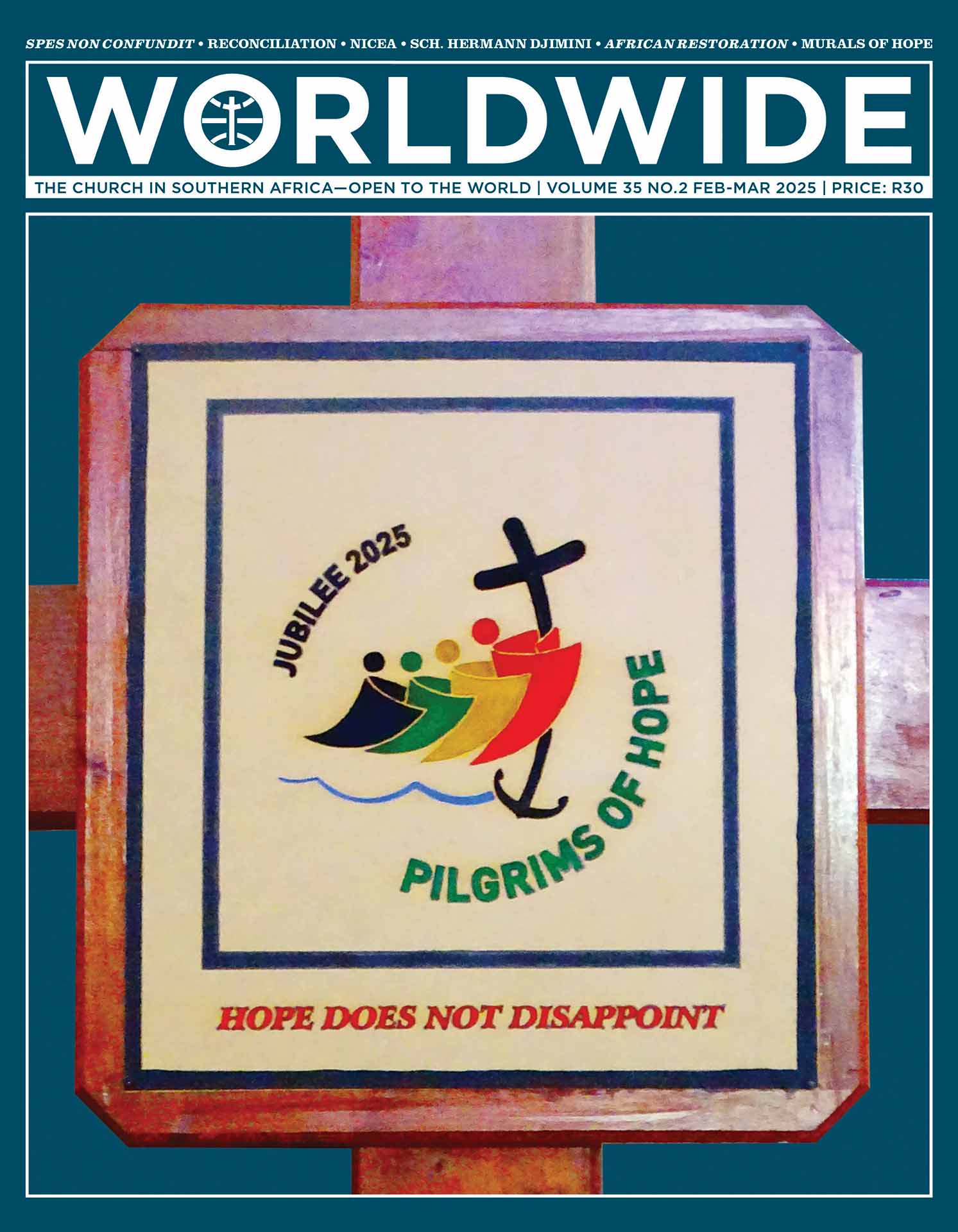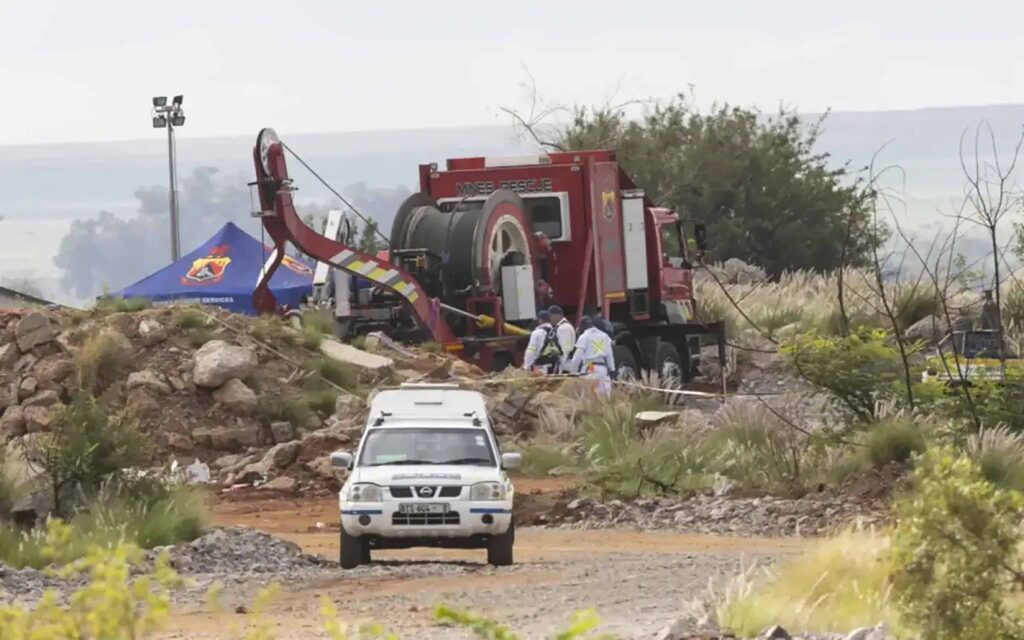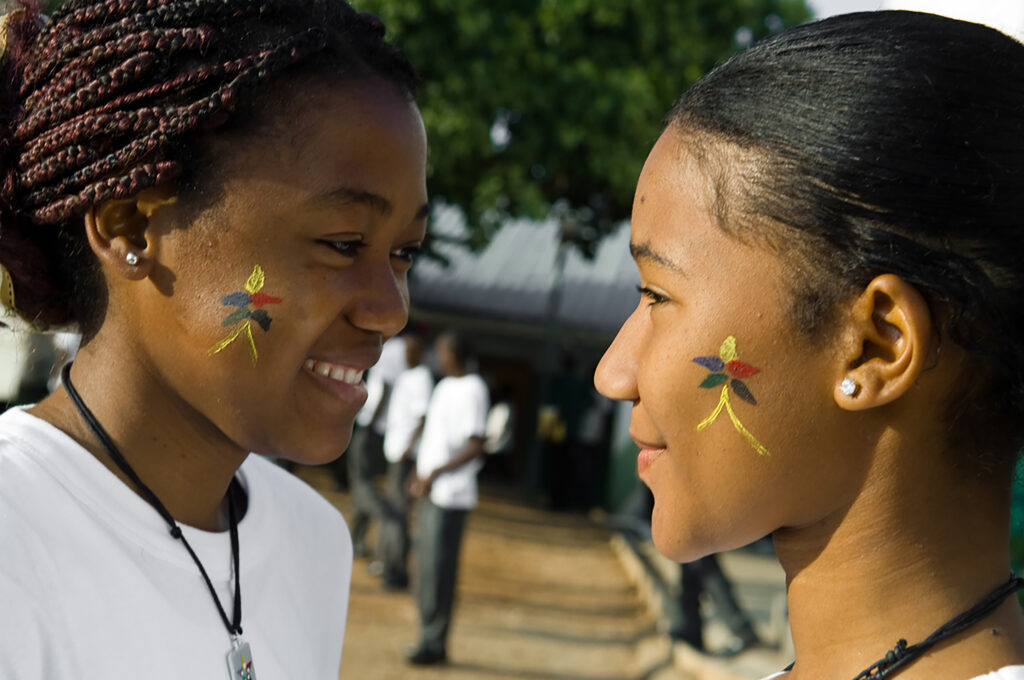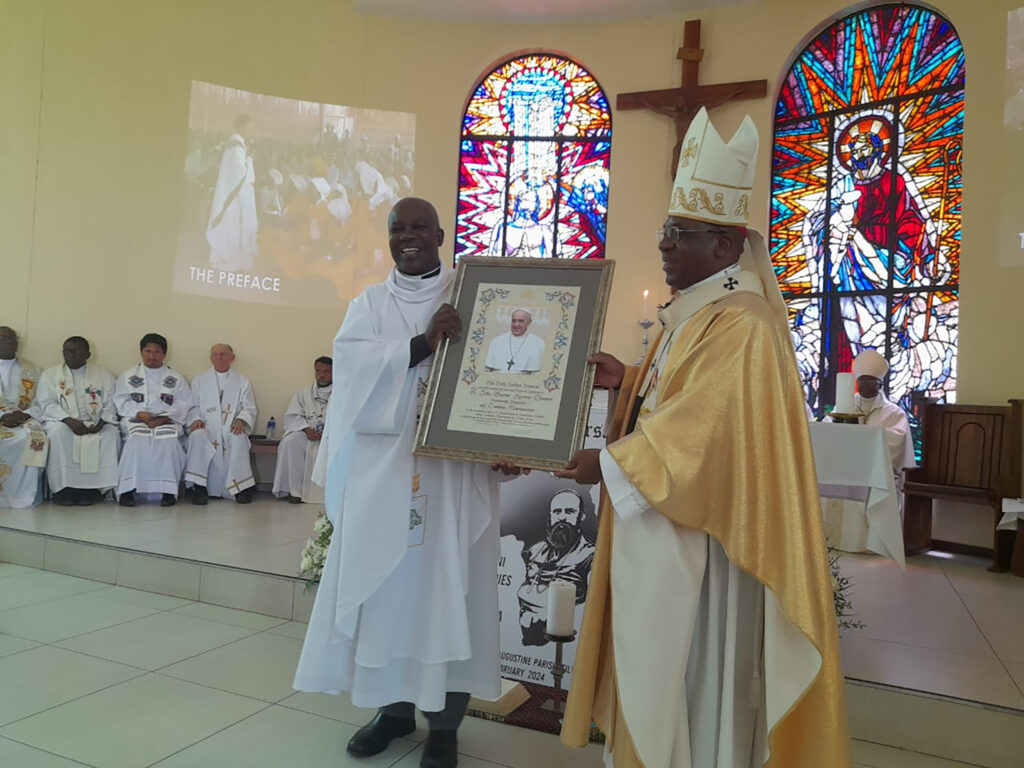
FINDING A HOME
The cross is also the anchor of our hope as it appears in the Jubilee logo embedded onto the lit candle. The lower part of the cross is elongated and turned into the shape of an anchor, which is lowered into the waves and stabilizes the ship amidst the storms.
In addition, the cross is bent down backwards towards the four human figures. This indicates God’s act of compassion, seeking us out and offering surety of hope.
WORLD REPORT • SPES NON CONFUNDIT

TIME OF HOPE FOR THE CHURCH IN AFRICA
The author delves into a deeper understanding of the key aspects of the Pope’s 2025 Jubilee Bull of Indiction—formal announcement or proclamation—entitled Spes non Confundit (Hope does not disappoint, in Latin). Fr John Baptist also reflects in this article on the Jubilee Year as a time for hope and restoration, especially for the Church in Africa.
BY FR JOHN BAPTIST KERARYO OPARGIW, MCCJ | PROVINCIAL SUPERIOR OF THE COMBONI MISSIONARIES IN SOUTH AFRICA
POPE FRANCIS published Spes Non Confundit, on 9 May 2024 in the Basilica of Saint Peter and asked for the gift of hope! For Christians, hope is not the vague optimism that sooner or later things will work out, but the certainty that everything contributes to the good of those who love God. Pope Francis’ message is introduced with “A word of hope,” followed by “A journey of hope”, “Signs of hope”, and “Appeals for hope”, and concludes with a beautiful reflection on what it means to be “Anchored in hope”.
Biblical and historical origins of the Jubilee Year
The name “Jubilee” is given to a particular year. The name comes from the instrument used to mark its launching, namely the yobel, or the ram’s horn, in Hebrew. We find an early referral to the Jubilee Year in Leviticus 25:8-13, according to which this was to be celebrated every 50 years. It was intended to be a time in which to re-establish a proper relationship with God, with one another, and with all of creation. It involved the forgiveness of debts, the return of misappropriated land, and a fallow period for the fields.
In 1300, Pope Boniface VIII called for the first Ordinary Jubilee, also known as “Holy Year,” or a special time for God’s holiness to transform us. The frequency of Holy Years has changed over time: it is now celebrated every 25 years; in between these Holy Years, the Pope can proclaim Extra-ordinary ones, as happened in 2016, with the Holy Year of Mercy, which highlighted the Catholic Church’s mission to be a witness of mercy.
The context of Spes Non Confundit
The Pope reminds us that on the global scene, hope is threatened today by a humanity which has not learned from the painful experiences of the past and continues to use violence instead of reason to resolve differences between people, communities, and nations. (Spes Non Confundit §8).
For Christians, hope is not the vague optimism that sooner or later things will work out, but the certainty that everything contributes to the good of those who love God.
Concerning the situation in Africa, and especially in South Africa, we notice positive signs of democratization and development. However, South African society is currently experiencing socio-political instability, rampant corruption and inequality; it can be compared to a “double decker bus with a comfortable upper deck and a crowded and uncomfortable lower deck and no stairway between” (Sparks 2016), resulting in abject poverty, steep living costs, and high rate of unemployment, especially among young people and women. Other ills include high levels of crime, of gender-based violence, vandalism and disintegrating infrastructure, manifestations of which have been the almost “chronic” countrywide load-shedding and water-shortages.


There is indeed evidence of a lot of despair, uneasiness and pent-up anger in the population. However, even though things look rather bleak all over the country, there are always potential opportunities to be unearthed. The current situation is in fact a cry for hope, which is a human inner desire for a fuller life, for something good to happen. “Those who hope in Christ can no longer put up with reality as it is…” (Moltmann 1964). President Cyril Ramaphosa underlined the same idea: “We are at our most essential, a nation defined by hope and resilience. Even in these trying times, it is hope that should sustain us and fuel our determination to overcome even the greatest of difficulties” (SONA 2023).
As Church, we are called to become hope-filled and providers of hope.
The Church does not proclaim the word of God in a vacuum, but in a concrete context in order to respond to the cry of the people. As Church, we are called to become hope-filled and providers of hope. The challenge is to move from an inward-looking mission to a mission that is outgoing visible to the world, as Pope Francis never tires of telling us. Moreover, the Church in Southern Africa has invited us to leave the sacristy and to become present to those who have been left alone in desperate situations (SACBC 2019).
Message and Significance of Spes Non Confundit
Pope Francis is really spot on with Spes Non Confundit, which is an essential contribution of hope to the rather bleak global and African situation today. The short document is pregnant with theological, pastoral and social connotations. I would now like to highlight and summarise a panoramic view of the Papal Bull.
- A Universal Call to Jubilee to be celebrated in Rome and worldwide: Pope Francis makes it crystal clear that the Jubilee is a synodal event of the whole Church and calls for the participation of all in a spirit of communion. The Local Churches in Africa need to hearken to this universal call and promote this great event according to the time frame explained by the Pope.
- Hope and Patience: Pope Francis makes a wonderful and paradoxical juxtaposition connecting the two virtues of hope and patience. While hope is the deep desire and expectation of the human heart of good things to come, patience educates us to wait. The challenge, in our fast-paced world, is that we no longer know how to wait, as we have become used to expecting everything immediately. Yet patience is the virtue that makes hope sprout and blossom. The Church in Africa needs to continue praying for the grace of patience, resilience and perseverance as she navigates through numerous challenges.
- A Journey of Hope: Pope Francis affirms that we are a pilgrim people and that our Christian life is a journey. The invitation for us is to give due attention to this symbolism of the pilgrimage and to implement it accordingly.
- Signs of Hope: The Pope insists on the desire for peace and justice and the call to be signs of hope for the poor, the youth, the imprisoned, the sick and the dying. The document further emphasizes that looking to the future with hope also entails having enthusiasm for life and a readiness to share it. Through the document we are invited to identify concepts and gestures which could inspire concrete pastoral care within our communities, keeping in mind that the primary beneficiaries of the Church’s mission are the poor, the needy, and the immigrants.
- Appeals for Hope: The Pope also reminds us that the fruits of the earth should be available to everyone. He therefore appeals for the cancellation of debt, and amnesty or pardon for prisoners. I would single out the chronic indebtedness of poor countries. What sense is there in keeping impoverished countries indebted to wealthy countries and holding them accountable for paying a debt that they will never be able to repay? Here I think we are invited to reflect on concrete ways of addressing these injustices in order to nourish a more peaceful and fraternal world.
- Anchored in Hope: The Pope highlights the special role of hope within the tryptic of the theological virtues—Faith, Hope and Charity—, as he states that hope is the virtue that gives inward direction and purpose to the lives of believers.


It is my hope and prayer that the Jubilee Year 2025 may indeed be a time of hope and restoration for all, including the Church in Africa. May the Lord free us from fear and procrastination, the exact opposites of hope, which paralyse us.

